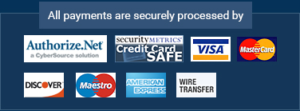Must use atleast 3 course materials for references and in text citations.
Must refer to attachments to answer questions.
MDQ STEP TWO: FRAMING THE DECISION
The purpose of Week 4’s Brainstorming Exercise is to discuss step two of the MDQ model, define the three components to PPO’s(case study) decision frame, and come up with PPO’s objectives to use in the decision making model.
There are three components to a decision frame in the MDQ model(mdq model is attached):
· PURPOSE – what you hope to accomplish by making the decision;
· SCOPE – what to include and exclude in the decision; and
· PERSPECTIVE – your point of view about the decision, the ways you want to approach, or others may approach making the decision. Framing is like the zoom feature of the camera. What we include in the picture is the scope of the decision it, the angle for the best lighting and view is the perspective and what kind of picture we want, an action or landscape shot, is the purpose.
Explain what Framing the Decision means by defining the terms of purpose, scope, and perspective in the MDQ model, using the course material as support. Use separate paragraphs with headers for EACH of these COMPONENTS and discuss PPO’s purpose, scope, and perspective by applying the facts of the case study.
How to Frame a Decision
Ask yourself these questions and reflect on the answers as you prepare your formal response. Discuss “How to Frame a Decision” in paragraph format.
Begin by Asking yourself the Following Questions:
· Use the decision statement provided in week 3 (which is in the attachments).
· Determine if the Decision is part of a bigger decision that should be addressed now.
· Determine whether you are covering too much ground with your decision if so reexamine the decision statement and make adjustments
· Ask why is this decision difficult to make? What factors are involved that make it difficult?
· Are you taking anything for a given? (e.g. are you depending on someone to react in a certain way?)
· Whose choice is it? Is the decision yours alone to make? Is there a customer, business, supplier, protester that needs to be involved to make it feel right?
· Is there anything that would keep you from acting if you saw the answer clearly? (e.g. a risk of the business closing if that option was the clear choice)
· How would someone you trust frame this decision?
Discuss these in terms of the MDQ model using in-text citations and applying the case study. The above questions must not be used in the discussion in the form of a response. You are expected to draft a formal response as you would in a research paper.
Traps to Avoid: You need to watch out for these!
· Jumping into the decision without framing the “picture”.
· Being limited by fears, peer pressure etc.
· Framing the problem too narrowly to bring it into your comfort zone or too broadly to make it difficult to address
· Making wrong assumptions-taking things as given that are not so or are not known for sure
Begin to Build the Decision-Clarifying Values (Objectives).
Ask yourself these questions and reflect on the answers as you prepare your formal response. Discuss “Build the Decision and Clarifying Values” in paragraph format. In the discussion, be clear on the minimum of four objectives you are proposing. It is recommended you propose more than four for discussion purposes.
Begin by Asking yourself the Following Questions:
· What do I (company) really want out of this decision? What are my or the company’s objectives in making the decision?
· Is there any one value I am willing to give up to get more of another value? For instance, would I give up salary for the position or how it contributes to the community?
· How do the my (company) overall goals apply to this situation? For instance, the business wants to keep making money, how does this relate to the protestors?
· Can I explain why I am giving up one value for the other if the alternatives require that I do so?
· Do the values I choose to exchange take into account the people who are most affected by the decision?
· Are the values I am expressing consistent with my ethics or those of the company?
Discuss these in terms of the MDQ model using in-text citations and applying the case study.
Traps to Avoid: You need to watch out for these!
· Thinking in the short term-only choosing for today.
· Not including all those affected by the decision.
· Being attached to sunk costs-
· Overreacting to risks or ignoring them
NOTE: Objectives must be clarified before coming up with Alternatives and in using the Decision Matrix in the next steps of the MDQ Model. Discuss PPO’s possible objectives at the end of your post, by explaining and justifying each one of them using the course material. Address each of the objectives in separate paragraphs. Create as many as possible for classmates to discuss and narrow down. Students must narrow down these objectives to four that make sense for PPO to apply to the MDQ Model.
Course Material
https://wisedecisions.com/about-decision-making-why-it-is-so-hard/decision-making-vs-problem-solving/
https://create.usc.edu/sites/default/files/publications/m01howa624601sec01.pdf
https://www.linkedin.com/pulse/elements-effective-decision-making-peter-f-drucker-muharemovic-mba/
https://www.thecut.com/2016/09/in-decision-making-process-matters-more-than-the-outcome.html
https://www.universalclass.com/articles/business/the-basics-of-the-decision-making-process.htm

